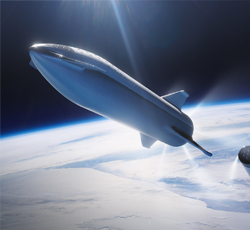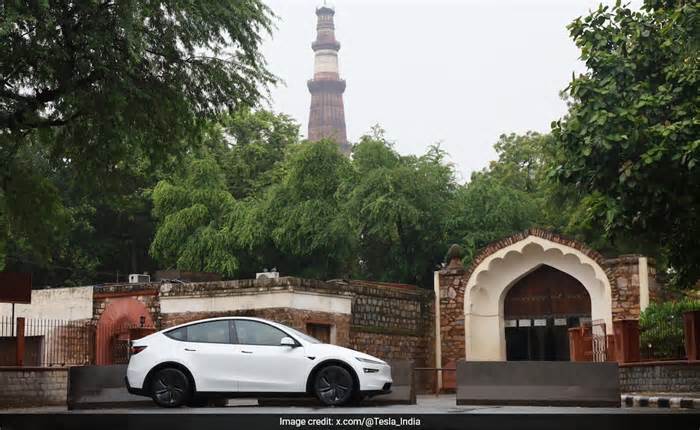
SpaceX Falcon Heavy launches X-37B plane, one of the US military’s ...
- by WESH
- Dec 29, 2023
- 0 Comments
- 0 Likes Flag 0 Of 5

SpaceX Falcon Heavy launches X-37B plane, one of the US militaryâs most fascinating secrets
654321 engine to power and lift off of. You heard that before? I think I'm right. And one of the chamber pressure now not all power and Tory plus 50 seconds into Falcon heavy flight under the power of £5 million of thrust. Falcon heavy is carrying O TV O TV seven out to space and we are coming up on Max Q here in *** few seconds. Max Q and Great call out there. We have passed through Max Q that is the point of peak mechanical stress on the vehicle and we've now passed through that. So we do have *** few events coming up here that will be booster engine cut off or beo separation of the side boosters followed by side booster boost back burn, start up and then the center core main engine cut off or Miko. Now again, those *** few events coming up here beo side booster separation. That'll be the separation from the center core. The center core will continue to carry stage two with the payload until it shuts down its engines with Mio and performs *** standard stage separation like you see on *** Falcon nine and there you could see on your screen on your right hand screen, some views from the side boosters and *** really awesome view of Falcon heavy on your left hand screen with all of those engines burning. Really right there coming up on Miko. Miko in *** few seconds here, this engine cut off side booster separation confirmed. And that show boost her respect start up and great news. We were able to also see that live on your screen. Biko the side boosters have separated from the center core and we have the start up of the boos back burn on both of those side boosters looking really awesome there on your screen. Now, the side boosters are returning to Florida under the power of three engines coming up are *** few events in rapid succession. That will be the conclusion of the side boosters boost back burn. Miko stage separation of the center core and the second stage as well as es one or the end back engine igniting on the second stage. Ses one stands for *** second stage engine start up. And as I mentioned previously for the request of our customer, we will not be showing second stage views after ses one. Additionally, our center core or stage one is expendable today, so we will not be attempting to recover it, but we will be following the side boosters back to land so you can continue to stay tuned for that and we're coming up on the conclusion of the side boosters burn booster boost track shutdown stage separation confirmed and like *** commission. And for pa and there we were also able to see and hear the call outs for the side boosters boost back burns concluding we had Miko our main engine cut off of the center core as well as stage separation and also heard confirmation that the end back engine has ignited. Now, as we mentioned, separation confirmed and great call out there. Also *** confirmation that the faring has separated from the second stage. Again, we will be attempting to recover those fing hals when they fall back to earth using our recovery vessel. Doug trajectory is not at all. Now again, as I mentioned earlier, the center core was not built to land or be reused. It is expendable having given it's all for the mission. We will say *** big thank you to the center core for the two side boosters. The boost back burns have completed and so far the vehicles are on *** good trajectory coming back to land and again with successful second engine start one that will wrap up our covers pertaining to the stage to the second stage. So we'll focus our attention on the side boosters. Now, those side boosters are currently on their way back to land in order to land back on land, we typically have three burns center core FTS has saved. We typically have three burns. They've already concluded *** boost back burn which helps them turn back around and head back towards land. The next burn coming up is the entry burn. That's what we will reignite three of the engines on each of those boosters and that helps slow them down as they enter back into the earth's atmosphere. Now, if we do have successful landings today, it will mark the 257th and 258 th landing of an orbital class rocket and those entry burns are coming up here in about 30 seconds or so. And again, as I mentioned earlier, the center core will be expended and we are not attempting to recover it today. Again, the entry burn is coming up here for the side boosters, booster entry burn start up and there's that call out that the entry burns have begun on the side boosters. And there you can see on your screen FTS you can see on your screen, the engines have reignited booster entry burn shutdown. Tyfts was saved and *** FTS so short burn for both of those boosters just under 20 seconds. All vehicles are on nominal trajectories. Great call outs there all vehicles on nominal trajectories. Now again, we do have one more burn for each of these side boosters coming up in just about 30 seconds. That is the landing burn. It's *** single engine burn for each booster and just one engine is powerful enough to slow the vehicles down and safely land back on land again. We are targeting, targeting landing zone one and landing zone two for today's landings, booster landing burn and we heard that call out and you can see on your screen that the engines have reignited. Let's watch as the side boosters touch down for landing stage two is in terminal guidance there you could see on your screen here. The crowd here, very excited. We have successfully landed both Falcon heavy side boosters on landing zone one and landing zone two with these two side boosters. This marks the 257th and 258th overall successful landing of an orbital class rocket and with successful confirmation of our side boosters landing that will bring our webcast to *** close today. We'd like to thank the United States Space Force for entrusting us with today's mission. And we'd like to thank all of our viewers for tuning in as *** reminder in about three hours from now. Our 96th and final mission of 2023 is set to lift off from our neighboring pad here in Florida. Be sure to tune in for that one. We hope you all enjoy *** happy and healthy New Year and we'll see you back here for an exciting 2024.
Updated: 10:04 PM EST Dec 28, 2023
Editorial Standards By Jackie Wattles and Ashley Strickland, CNN
SpaceXâs hulking Falcon Heavy rocket returned to the skies Thursday evening, and this time it launched a mysterious spacecraft for the U.S. military that will carry out cutting-edge research.The rocket lifted off from NASAâs Kennedy Space Center in Florida at 8:07 p.m. ET, carrying the militaryâs X-37B space plane â which is uncrewed and operates autonomously â to unprecedented altitudes. The launch streamed live on SpaceXâs website. The side boosters returned to Earth and safely touched down.It is not clear, however, exactly where the space plane is going.The X-37Bâs activities in space have long been the subject of fascination and speculation in the space community as amateur enthusiasts race to track its whereabouts and share theories about its activities.Resembling a miniature NASA space shuttle with the windows blacked out, the reusable and fully autonomous X-37B has been known to carry out research on concepts such as relaying solar energy from space for use back on Earth and studying the effects of radiation on seeds used to grow food.And this mission â the seventh trip to space for an X-37B plane â promises to be even more intriguing than earlier flights.A powerful rideThis launch marked the first time the space plane has hitched a ride on a SpaceX Falcon Heavy, one of the most powerful operational rockets in the world.Previously, the X-37B has launched on the SpaceX Falcon 9 vehicle and the Atlas V rocket built by United Launch Alliance, a joint venture between Lockheed Martin and Boeing.The Falcon Heavy produces more thrust than both of those rockets combined.The launch via the Falcon Heavy could indicate that X-37B is destined for more distant orbits, perhaps even to the moon or Mars, suggested Paul Graziani, CEO of COMSPOC, a company dedicated to tracking objects in space.If it does travel much deeper into the cosmos than earlier flights, it could be far more difficult for sky-gazers on Earth to determine where the vehicle is.If the military doesnât want people to track the X-37B, Graziani added, the vehicle can be hidden in the glare of the sun or by various other means â including changing its position often. The X-37B has already proven on previous flights that itâs capable of making multiple maneuvers in space.COMSPOC will attempt to search for the vehicle if the spacecraft winds up in geosynchronous orbit, which lies about 22,400 miles from Earth and is where most massive communications satellites operate. Geosynchronous orbit is where the company focuses its sensors for tracking satellites, said Graziani and Bob Hall, COMSPOCâs director of operations integration.âI think itâs one of the most interesting things thatâs happened in space in a long time, whatever itâs going to do,â Graziani said of the X-37B launch.Space technology innovationsThe X-37B makes it possible for the United States to carry out experiments to understand how to improve ongoing and upcoming space operations and push the boundaries of whatâs possible, according to a statement by Gen. B. Chance Saltzman, chief of space operations.Among the research on board this mission is a NASA experiment that aims to find ways to sustain astronauts on future deep-space missions. Called Seeds-2, it will âexpose plant seeds to the harsh radiation environment of long-duration spaceflightâ and build on research carried out on previous X-37B missions.Learning how to grow food in the harsh, soilless environment of outer space could be crucial for astronauts on lengthy missions to the moon or beyond â places where itâs more difficult to deliver fresh supplies.Itâs unclear how long the spacecraft will spend in orbit for this stint, though historically each X-37B flight has been longer than the last.The last trip to space for the autonomous X-37B concluded in November 2022 after the spacecraft logged nearly 909 consecutive days in space. During that sixth mission, as CNN previously reported, the space plane carried experimental technology designed by the U.S. Navy to convert solar energy and transmit it back to the ground, according to the military.The X-37B has already spent more than 3,700 days in space on other uncrewed missions. When it returns to Earth, it will land on a runway, much like an airplane swooping down from the skies.Challenging ChinaThis launch came after more than two weeks of delays. SpaceX was prepared to lift off on Dec. 10. The launch was pushed off twice because of weather and issues with the ground pad before SpaceX abruptly delayed the mission indefinitely to âperform additional system checkouts.âBut during the downtime, China â which the U.S. government considers its chief competitor in a modern space race â sent its own secretive spacecraft into orbit.Little about the spacecraft from China is known. Some in the industry speculate it is a doppelganger of the X-37B in form and function, though no official photos of the vehicle have been released.Chinaâs state-run Xinhua News Agency reported that the clandestine spacecraft launched aboard a Long March 2F rocket.The agencyâs post added only that during its stay in space, the vehicle will test out reusable space technology and carry out unspecified science experiments âfor the peaceful use of space.âIt is not clear how long Chinaâs space plane will spend in orbit.
MERRITT ISLAND, Fla. —
SpaceXâs hulking Falcon Heavy rocket returned to the skies Thursday evening, and this time it launched a mysterious spacecraft for the U.S. military that will carry out cutting-edge research.
The rocket lifted off from NASAâs Kennedy Space Center in Florida at 8:07 p.m. ET, carrying the militaryâs X-37B space plane â which is uncrewed and operates autonomously â to unprecedented altitudes. The launch streamed live on SpaceXâs website. The side boosters returned to Earth and safely touched down.
Advertisement
Please first to comment
Related Post
Stay Connected
Tweets by elonmuskTo get the latest tweets please make sure you are logged in on X on this browser.






 Energy
Energy

















